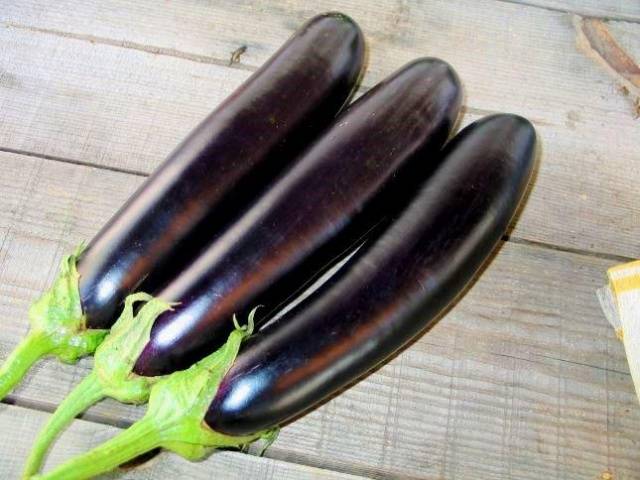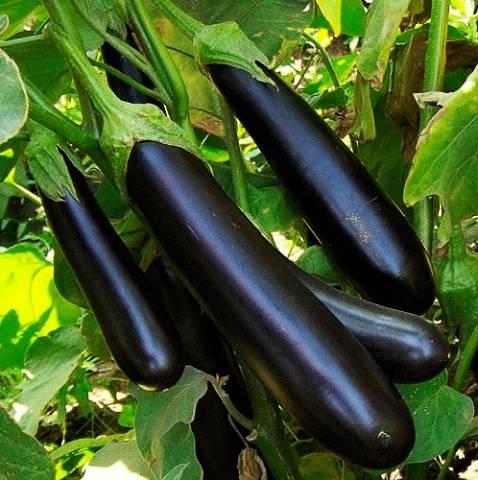Content
Growing eggplants is a rather complicated process for a summer resident. Approaching it carefully, many note the need to choose the right seeds and variety. He will have to satisfy the needs of the gardener, delight him with taste and productivity. Disease resistance and unpretentiousness are especially welcome. Let's talk about the Long Purple variety and evaluate it.
Detailed description
The problem of growing eggplants in Russia concerns the growing season, which, alas, does not coincide with the short summer in many regions. But eggplant is a heat-loving and demanding crop! Therefore, the seedling method of cultivation is often chosen even in the south of the country. It is for this reason that early ripening varieties are in great demand among us. One of them is called “Long Purple”, which is what we will talk about.
The name of the variety absolutely confirms its external qualities. The fruits are long and have a small cross-sectional diameter. Below is a table with the technical characteristics of the variety.
Indicator name | Description |
|---|---|
Group affiliation | Variety |
Description of fruits | are 20-24 centimeters long, approximately 6 centimeters in diameter, cylindrical in shape, dark purple in color; eggplant weight is from 200 to 250 grams |
Culinary purpose | universal, the pulp is tender, juicy, without bitterness |
Maturation speed | early ripening, 95-130 days |
Planting scheme | 40x40, sowing depth 1-2 centimeters |
Description of the plant | close upright bush |
Productivity | up to five kilograms per square meter |
This variety has good commercial qualities, it is stored for a long time and is easily transported, so it can be grown on an industrial scale. The most attractive qualities are unpretentiousness, good keeping quality, and excellent taste.
Of course, each eggplant has growing characteristics that should not be forgotten. “Long purple” also requires specific care.
Features of growing the variety
In Russia, many varieties of eggplant are grown in greenhouse conditions. These include “Long Purple”. Open ground is recommended only in the south of the country, where warm weather persists for a long time.
The growing periods need to be divided into two stages:
- Plant seeds for seedlings and wait for the warmer months (May-early June).
- Transplant the eggplant plants into the greenhouse and care for them.
“Long Purple” eggplant seeds are produced by several agricultural companies. All of them require pre-soaking. Previously, some summer residents complained about the germination of seeds of this particular variety from the Sedek company, but now this problem has been resolved.It is imperative to plant in warm, moist soil of good quality. Eggplant loves warmth and organic matter, loose soil, and this variety is no exception.
A good video about sowing eggplant seeds of this variety in three different ways is presented below:
Then the crops are covered with glass or film and placed in a warm place. The temperature should be at least +18 degrees, but it is better to increase it to +24-27 during the day. In regions where there is little sunlight, additional light sources will need to be installed for seedlings. Remember that this culture does not like:
- cold (this applies to watering, air and soil temperature);
- drafts;
- prolonged absence of sun.
If there is not enough sunlight, the Long Purple eggplant seedlings will turn out thin and elongated. Such plants will not produce a good harvest. The soil should not be overdried or waterlogged, especially if it is not possible to achieve warmth in the room.
If you sow the seeds in early March, they can be transplanted into the greenhouse at the end of May - beginning of June. It is worth noting that eggplant of any variety does not tolerate this process well; the plant is placed in warm soil, not pressed down too hard, trying not to damage the root system.
“Purple Long” eggplant is planted according to the 40x40 pattern, leaving the same distance between the beds and between the plants. In this case, approximately 6 plants are planted per square meter.
For better pollination during the flowering period, it is necessary to shake the bushes of this variety, this will produce more ovaries. Additionally, complex fertilizer (nitrogen and phosphorus) is applied to the soil three times per season:
- a week before transplanting into the ground, it is necessary to fertilize the soil (if this was not done in the fall);
- during the flowering period of eggplant;
- during the period of ovary formation.
The “Long Purple” eggplant bush is low, erect, and does not need to be tied up. As soon as the ovaries appear, you can remove a few lower leaves. It is imperative to monitor the ripeness of the variety. Eggplants are harvested at technical ripeness, when the flesh is dense but not hard. The overripe fruit of the “Long Violet” first turns yellow and then turns brown; it cannot be eaten in this form.
Reviews from gardeners about the eggplant “Long Purple”
Reviews from those who have already grown this variety have more than once helped beginners make their choice and suggest how to properly cope with some difficulties. Let's look at some of them.
Conclusion
Today, every summer resident can choose not only a high-yielding variety, but also one that is resistant to external influences. According to statistics, “Long Purple” eggplant is very popular both in the south and in central Russia.














